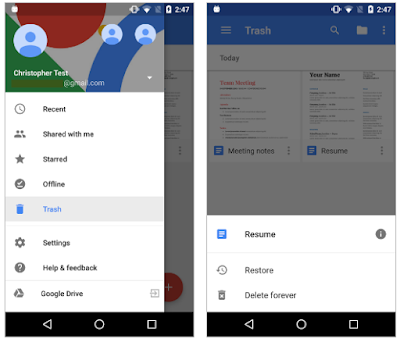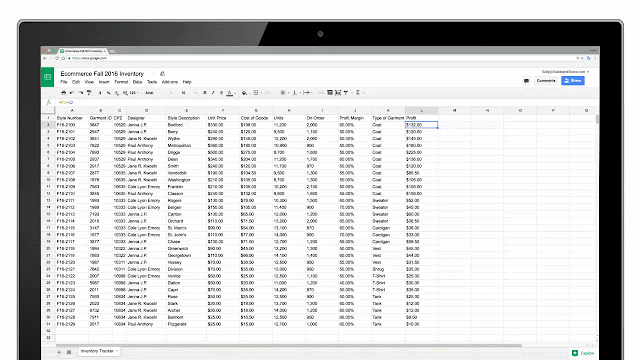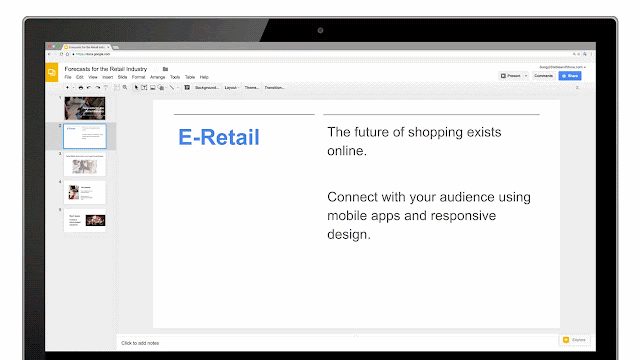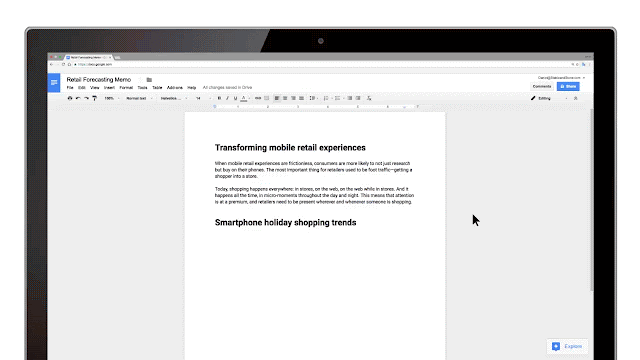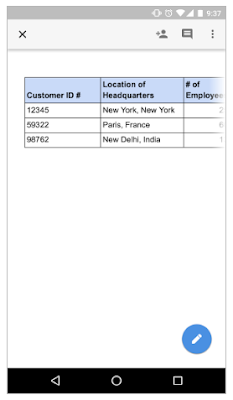Posted by Daniel Durgan, IT Business Partner at ISGEditor's note: Today we hear from Daniel Durgan, IT Business Partner at ISG, an international construction services company delivering fit out, construction, engineering services and a range of specialist solutions. Daniel explains why there’s never been a better time to digitally transform the construction industry. The construction industry is undergoing a digital revolution. Companies that have for decades relied heavily on printed contracts, drawings and documents are now moving to online tools to save time and money and keep productivity up in a marketplace that’s more expansive and more demanding. At ISG, we’re using Google’s cloud-based tools to ensure that we’re at the forefront of this industry shift.
With Google Apps, we’re taking full advantage of technology-enhanced collaboration, productivity and mobility. Over the course of a few hours, I can use
Google Drive to review a presentation on my tablet, Gmail to check emails and
Google Calendar to schedule meetings on my phone while away from the office. I can also jump into a meeting with colleagues from around the world from any of the 26
Chromeboxes that are set up in one of our conference rooms. Whether I’m on a site visit, in the office or on the move,
Google Apps allows me to continue working and collaborating with my team.
Projects move fast with real-time collaboration
It’s essential for our business to control who has access to certain documents. Drawings must only be issued to authorised people, and each person must review the latest version as it’s being developed. Drive enables us to completely control what’s shared inside and outside of our company — the fact that our team alone has 1.5 million files in Drive speaks to our reliance on the tool for secure file storage.
Google Docs allows us to collaborate on shared documents at the same time, no matter where we are in the world. I can start shaping up a proposal in London and invite a colleague in Europe to work on it with me. There’s also more of a human element. When someone comments, you see their face next to it — it ties you emotionally to the process. We keep track of all our revisions in
Sheets to monitor our progress. And we can always instant message each other with quick questions or suggestions, so we feel connected, all the time.
A lot of what we do is very visual. It’s hard to describe building plans and designs over the phone. With
Hangouts, we can bring everyone together to discuss these plans and drawings as if we were all in the same room. We can move quickly from stakeholders to contractors to suppliers to make sure the right people are involved in the right conversations.
Staff expect more from an IT solution
A big part of my team’s role is to help build relationships and ensure employees communicate effectively and get the support they need. When we sent out a survey using
Forms to ask all our staff what they’d like to see from IT, they told us they wanted to find out more about our Google tools. We’re using
Synergise Google Apps Training to help our stakeholders go beyond the basics and use the suite to its full potential.
Quality: getting it right the first time
Quality is extremely important in our business, so we carry out frequent on-site check-ins to ensure teams are following the proper processes and delivering a high standard of construction correctly the first time. When we do these quality checks, we submit recommendations and observations using Forms on Android tablets. The information is imported into Sheets, and using
Apps Script, we create dashboards, so employees across teams and functions can easily track the check-ins in real time.
We’re improving the way we work all the time, and that’s thanks to the support and enthusiasm of our employees. Many of our automated solutions have been suggested by them, and it’s great to see how passionate they are about Google Apps. There’s also an excitement among my team around what the future holds for us and our industry with new tools at our dispense and a new way of working for our customers.
